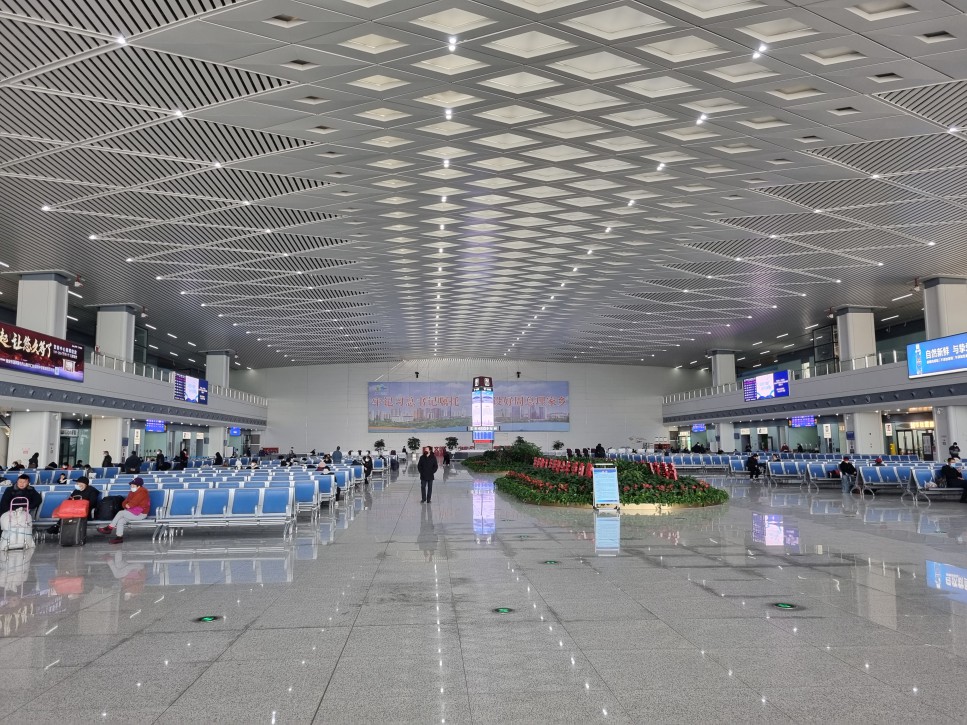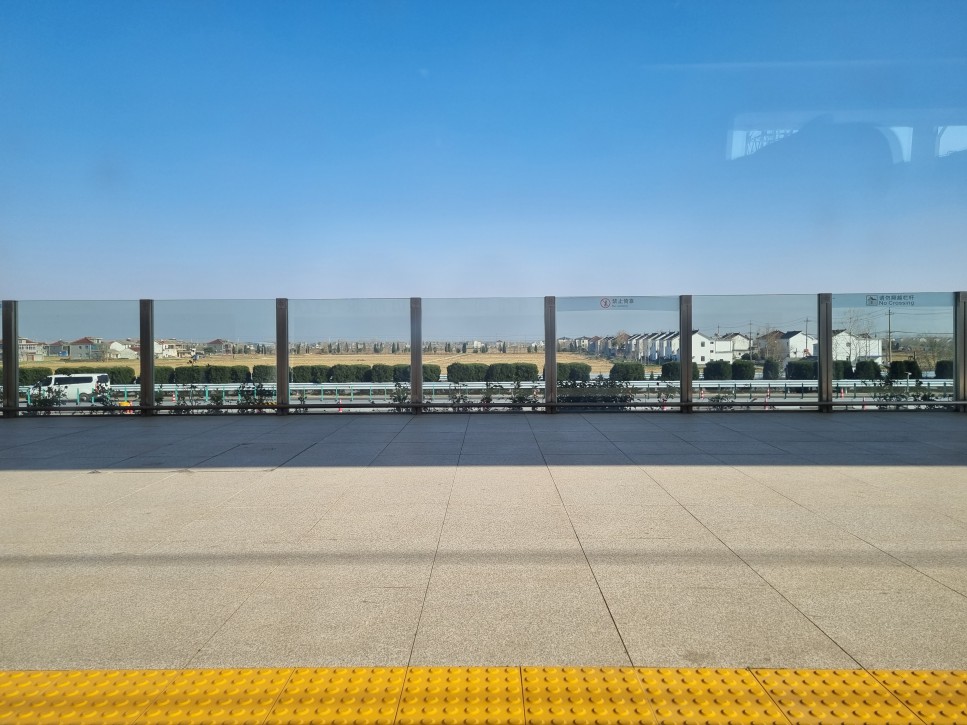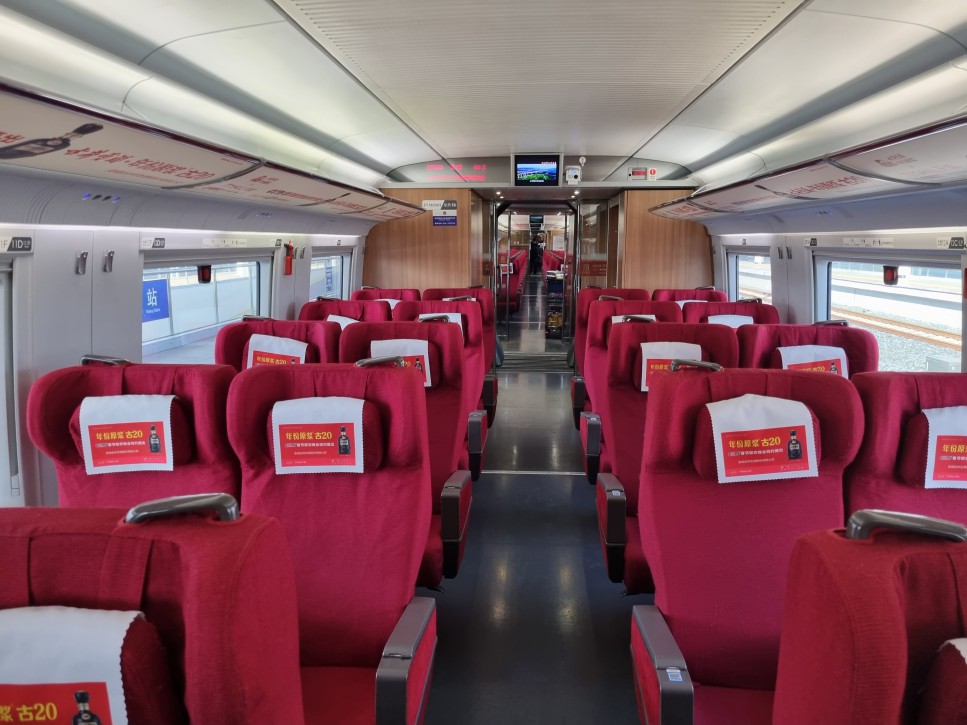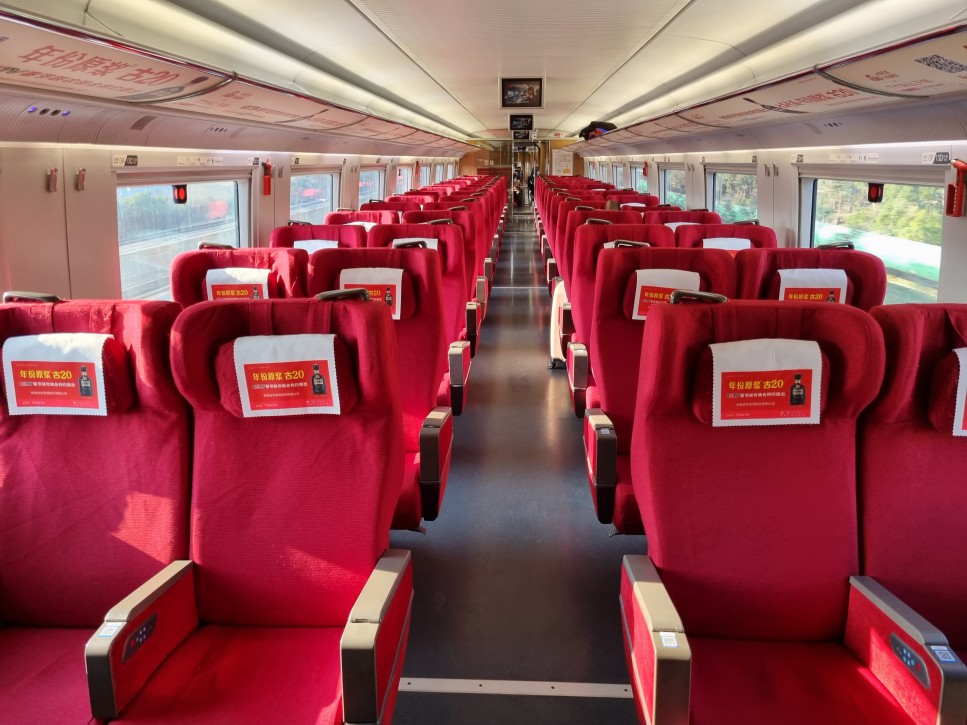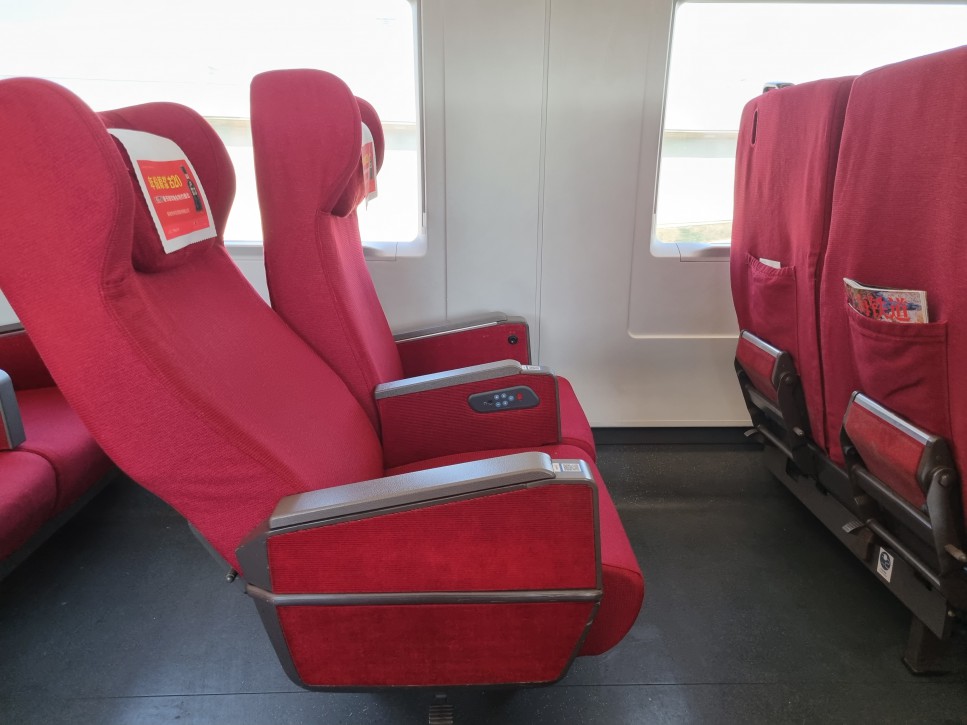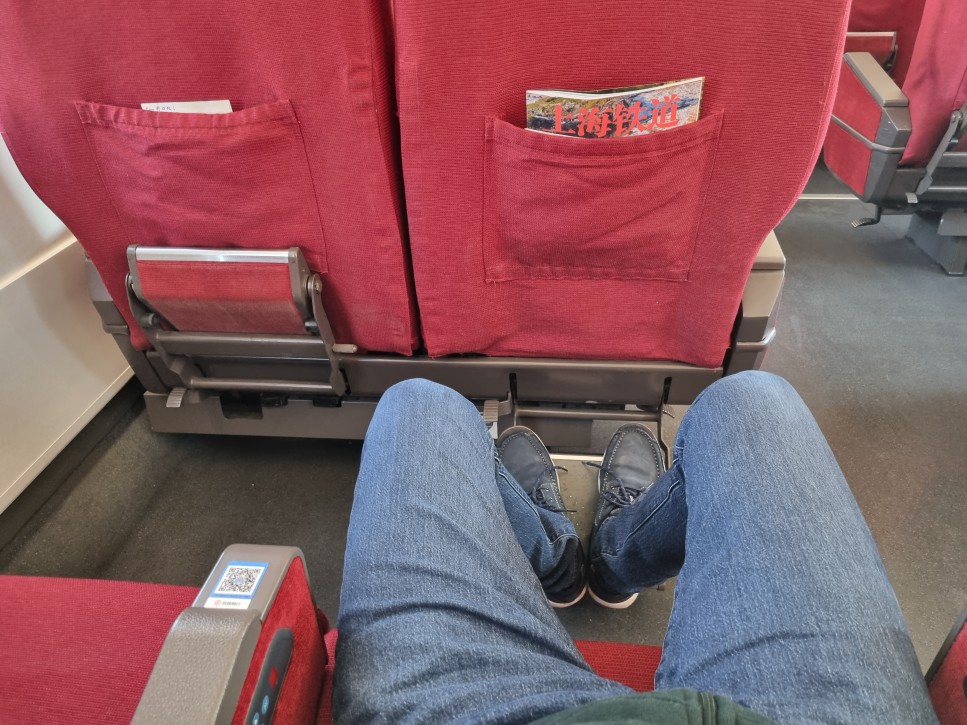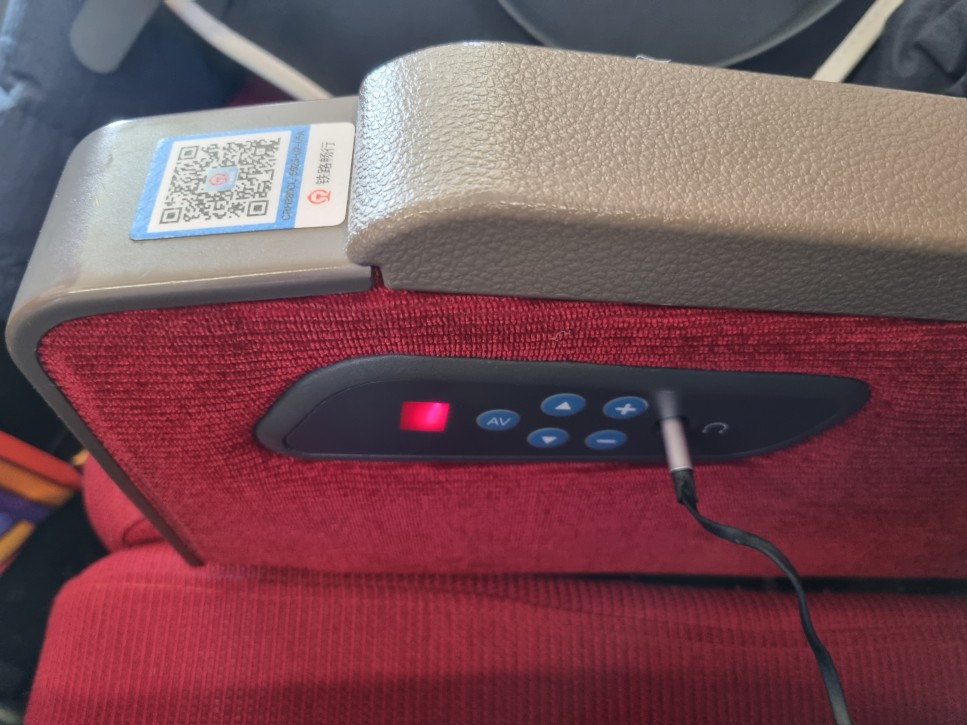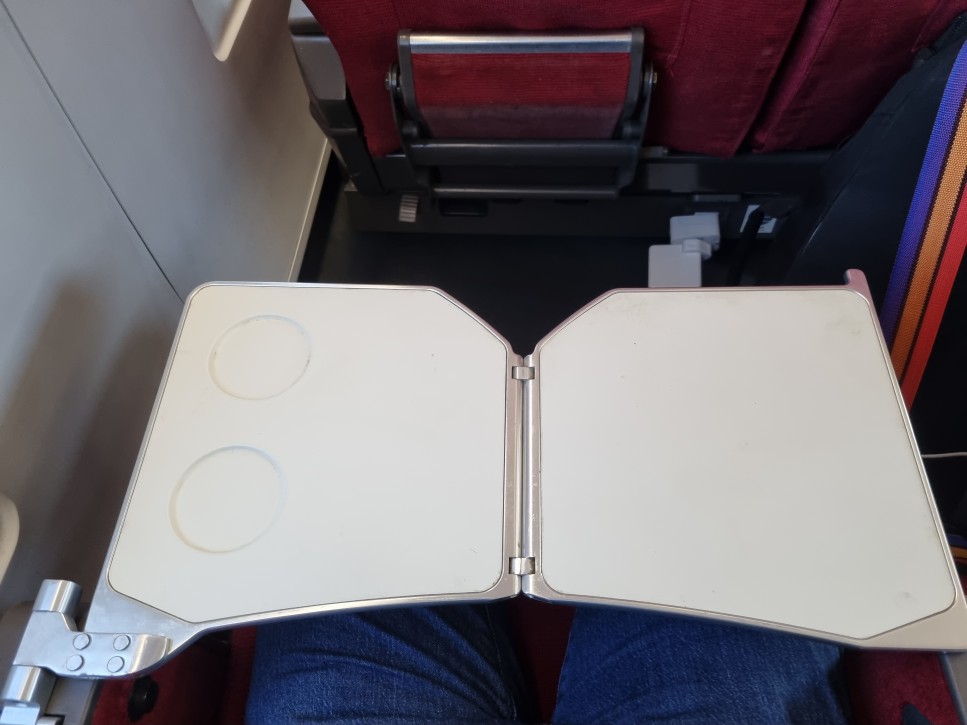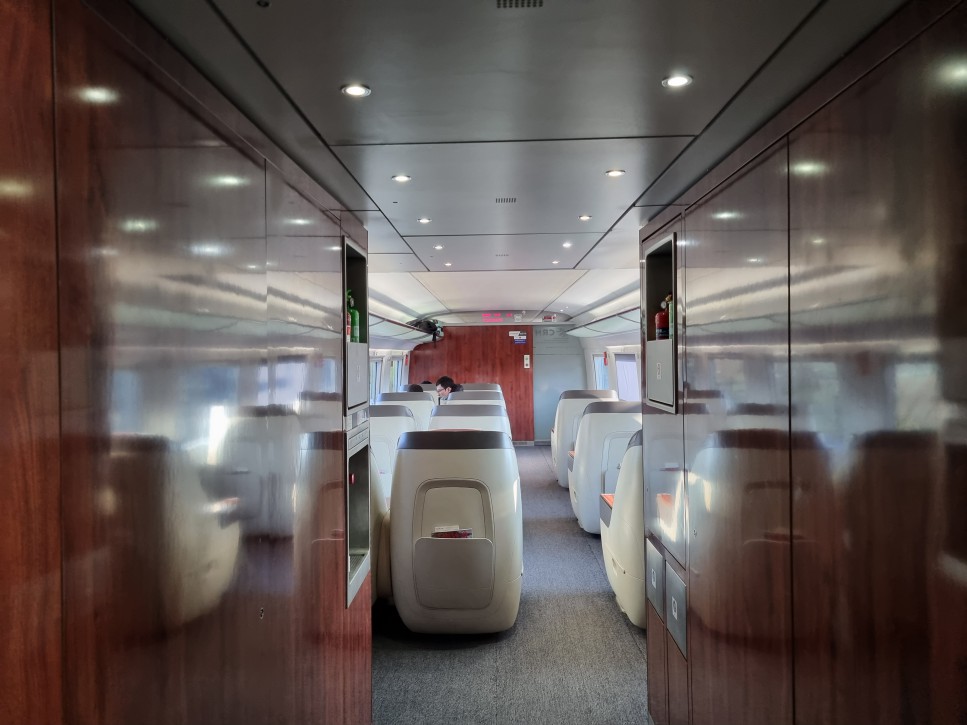China’s covid restrictions were finally coming to end and I took the chance to visit my family after not being able to return for more than three years. 95% of the time I was just staying home so I don’t have much travel-related stuff to write about, but I did take the high speed train once, which is worth a brief review and comparison with what we have in the UK.
China’s high speed rail (HSR) network officially came into operation in 2008 and has been developing incredibly fast ever since. By now it has reached almost every populated corner of the country, and has some super long routes. For example, you can travel from Beijing to Hong Kong (paused during the pandemic but set to be resumed soon), a journey of 2,440 km or 1,516 miles, for just under 9 hours.
I’m from a small city in east China (with a population of nearly 5 million). When I went back last time in 2019 there wasn’t a high speed rail station yet, but it is now open with more than 150 trains passing by every day.
My destination is Shanghai with a travel distance of about 400 km or 250 miles. As my hometown isn’t a major city there aren’t any very fast trains available yet. They have quite a few stops along the way so the whole trip takes around 3 hours.
HSR has a special fleet called FuXingHao, which was built more recently with advanced technology and is supposed to be more comfortable. However, I just picked my train based on the timing instead and didn’t get a FuXingHao.
HSR has three cabins on board, with the respective price for my itinerary:
- Second Class: 187 CNY / £22 / $27
- First Class: 298.5 CNY / £36 / $43
- Business Class: 617.5 CNY / £74 / $90
Interestingly business class is superior to first class, which sort of shadows Eurostar’s naming convention (Business Premier > Standard Premier). First class is about 60% more expensive than second class, whereas business class has a much higher premium of around 110% compared to first class. Such pricing practice is consistent across the entire network.
Unlike in Europe, you don’t get any discount for booking in advance as prices are virtually fixed. They do have a loyalty program though which I didn’t dip into.
This is the station of my hometown.
When it’s time to board there are long-ish queues for second class, but the first class carriages are pretty empty. China is having a massive covid outbreak which also contributes to the low passenger volume.
The first class carriage is four-seat abreast with an aisle in the middle, and here’s how it looks like:
The seat comes with a headrest and reclines nicely with a decent angle. Legroom is great.
Power and radio sockets are available.
And a small tray table, which is similar to what you get on a plane, can be used for holding your laptop or food. You don’t get free food or drinks in first class though.
Somehow wi-fi isn’t available on board, although if I remember correctly it should be on most HSR trains. China’s 5G coverage is very good everywhere though, so it’s not a major issue.
The foremost of the train is a small compartment for business class passengers. The seat contour is shaped like a pod, and it is lie-flat just like the business class concept on an airplane.
You also get complimentary meals on longer itineraries. This time I can’t really justify paying £40 more for my trip, especially since first class is already a very good product itself.
It’s safe to conclude that China’s HSR and their first class cabin are much better than UK’s counterparts. I’m also looking forward to trying out Shinkansen when I visit Japan next time, which is much more familiar to the western world.

